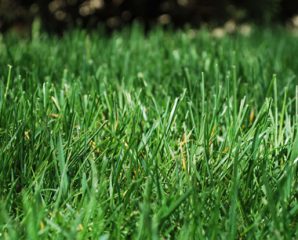Last week in Part I, I talked about some basic characteristics of KB (Kentucky Blue Poa pratensis), PR (Perennial Rye Lolium perenne) and CRF (Creeping Red Fescue Festuca rubra ). Now let’s look at how they interact.
What is a Blend?
A grass seed blend contains several varieties of the same genus and species of grass. For example, our Fast Establishment blend contains three varieties of PR.
Let’s look at a blend of PR: I have always said, ‘This is what gets you paid’. It germinates fast (in about seven days), has good color and can be ready to mow in less than a month. The problem though, with having one genus and species of grass is that it leaves the lawn more vulnerable to wide-spread damage from things like fungus or insects. However, if something like quick erosion control is the concern, a PR blend is probably a good option.
What is a Mix?
A seed mixture, like our Supreme, is made up of different genus and species of grass: KB, PR and CRF. A mix decreases the possibility of widespread damage with things like insect and disease because each species (KB, PR and CRF) potentially have different susceptibilities or resistance to different pathogens and physiological problems like drought or even fertility issues. What affects one, may not affect the other, thus avoiding total destruction of the turf stand as a whole.
Our Supreme Mix is often referred to as a ‘Sun & Shade’ mix. Generally the KB will persist more in sunny areas along with PR, and the CRF will dominate in the shade areas. All the seed will germinate in all the areas but you will loose the species like PR in the shade where the CRF has the advantage. However in a mix, some of the genera chosen for it may have some tolerance for shade, giving some transitional growth between sun and shade. CRF will grow in full sun and is often put into a full sun mix, making it look like a sun shade mix but the CRF has a fine hair-like texture that allows light to get through to the slower germinating and slower to establish KB. Once the KB matures (about one year) it will dominate and you will loose the CRF in the areas with full sun.
A word about seeding
It is important to remember that seeding too heavily lessens the ability for the KB to become established, especially when PR is in the mix. The Rye grass germinates so fast, that the KB just doesn’t stand a chance from the very beginning, it won’t get enough light. A lot of money is wasted due to seeding at too high a rate and you end up with nothing but PR. For example, I know of a 15,000 sq ft lawn that is all PR grass that was seeded with a 50:50 mix of PR and KB (remember those percentages are by weight – since KB seed is much smaller the mix is actually about 80% KB by actual seed count) and yet the lawn is all PR because he used 250 pounds when he should have only used about 75 pounds.
Shade
Shade mixes will have mostly CRF with some PR and KB that have some shade tolerance. Some of the nicest lawns I have ever seen are in the shade. But remember: even the CRF and others simply tolerate the shade. Their energy resources (through photosynthesis) are limited, and thus grow slowly, are slow to fill in, and most importantly, are slow to recover from damage.
As with any lawn you must get all aspects for growth provided to have success growing a shade lawn, like the proper pH so the grass plant can get the fertilizer it needs. And the correct texture with a loose, loamy, friable soil so roots can actually move out into the soil capillaries along with moisture and fertility.
The biggest reason for a new lawn failure is lack of proper site preparation prior to seeding.

